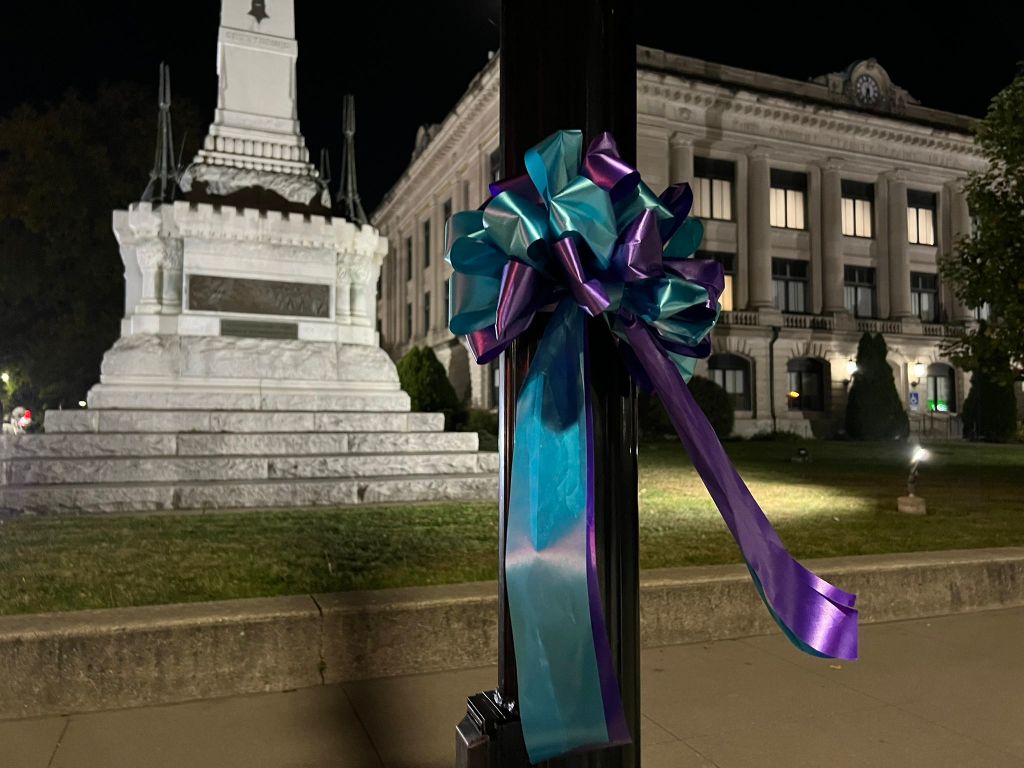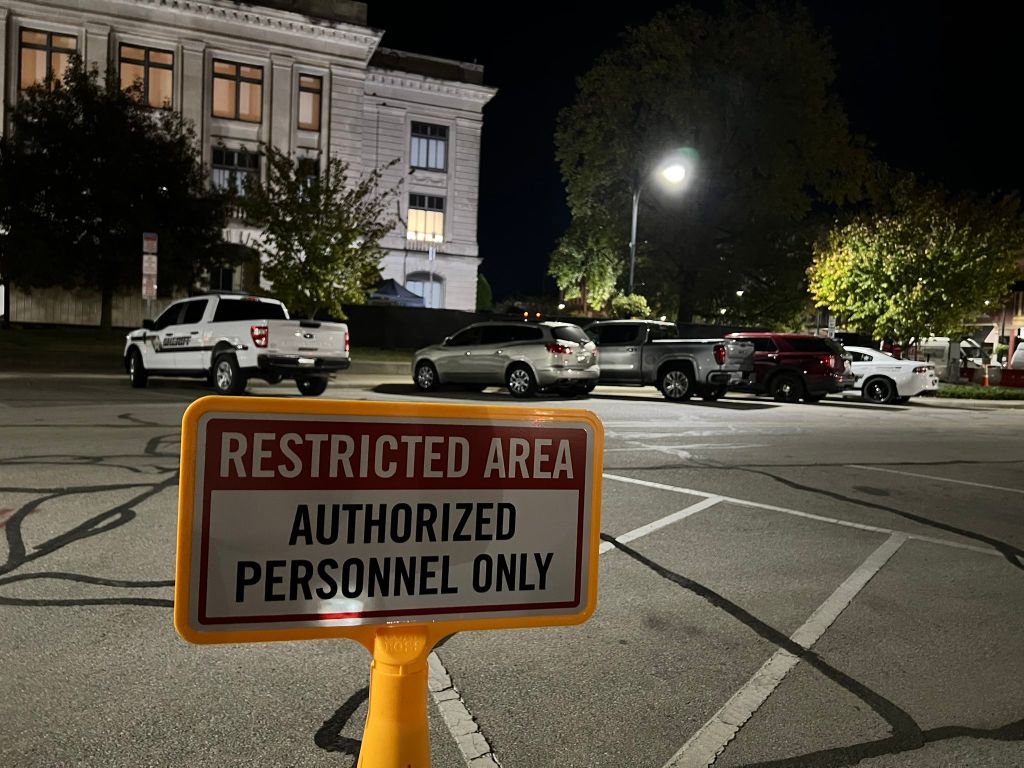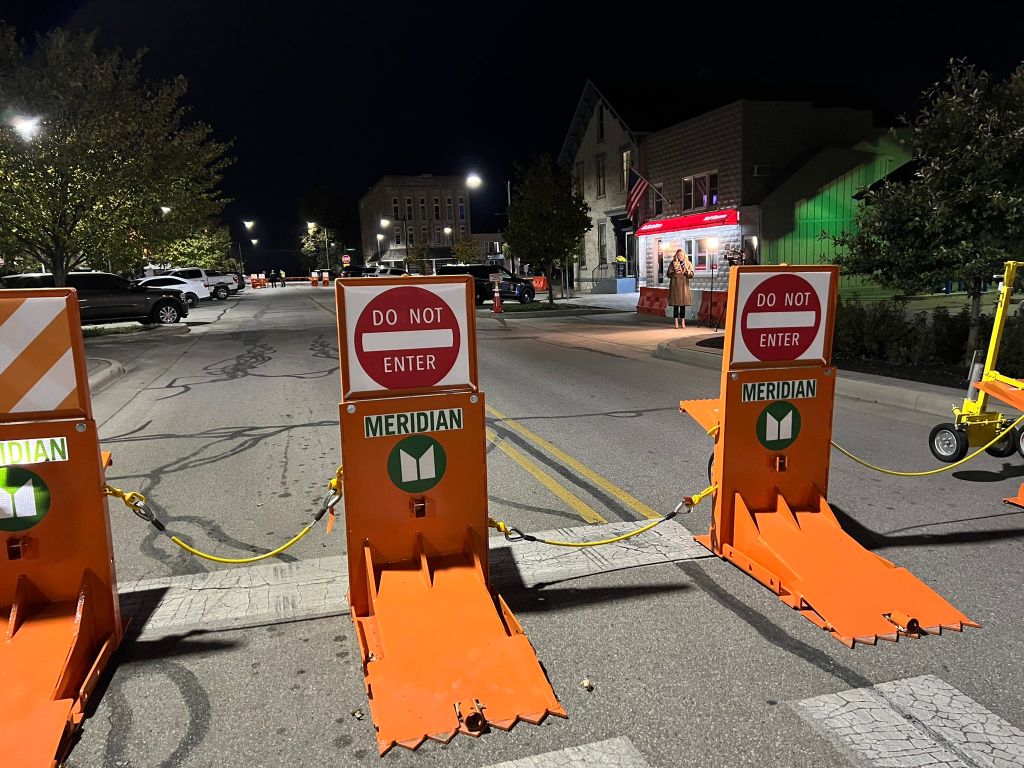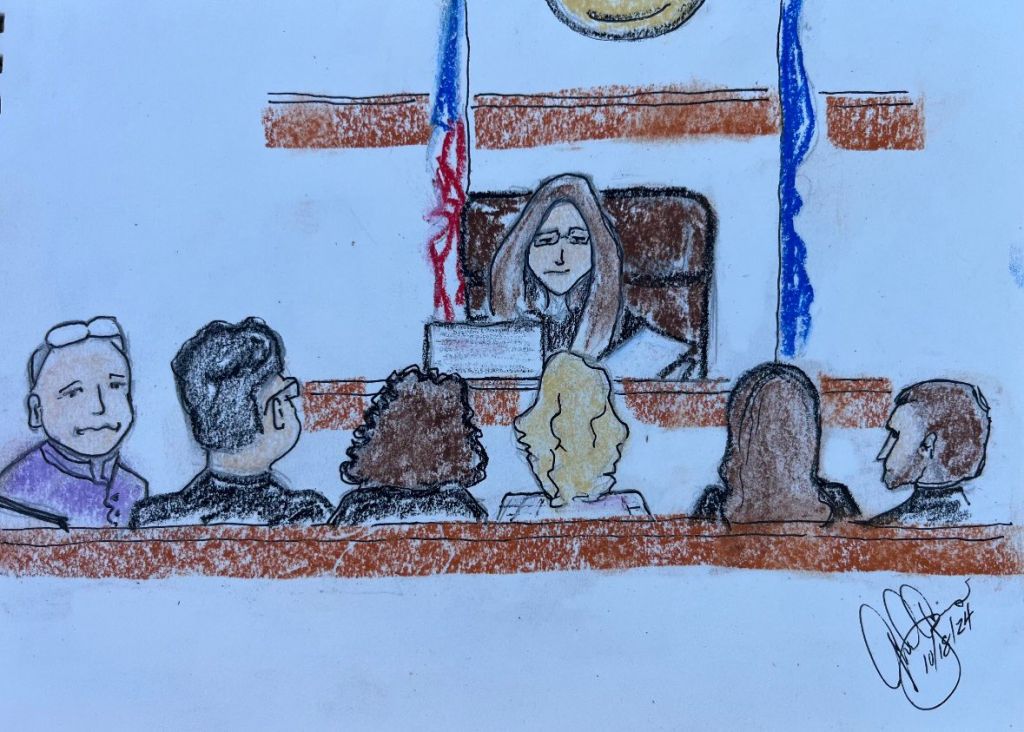“Grandma, I’ll be okay” – A Look at the Delphi Murders Trial Day One
Share the post
Share this link via
Or copy link
Jury Instructions
Special Judge Fran Gull arrived about ten minutes late due to a situation involving media and police outside of the Carroll County Courthouse. Judge Gull informed the audience journalists representing NBC and the Associated Press violated the September 30th decorum order and filmed the jury as they arrived at the courthouse Friday morning.Love Delphi Case? Get more! Join the WIBC 93.1 FM Newsletter
We care about your data. See our privacy policy.
Opening Statements
Carroll County Prosecutor Nick McLeland kept his opening preview short. In a near 20-minute speech to the jury, Prosecutor McLeland reiterated his stance that this case is about three things: Bridge Guy, the bullet, and the brutal murders of two young girls. Those of course being Delphi teenagers Abigail Williams and Liberty German, who were murdered near the Monon High Bridge nearly eight years ago. McLeland focused on emotion, painting a picture that Richard Allen used his gun in order to strike fear in Abby and Libby, which then fueled his desire for power and thus, control. McLeland repeated his claim that Richard Allen is Bridge Guy, or simply put, the man you have witnessed numerous times in pictures shared by police. A man in blue walking on the Monon High Bridge, and who McLeland claims used his gun to direct the girls “down the hill.” McLeland said Allen is that man and the State of Indiana will prove it.On to the Defense
Attorney Andrew Baldwin represented the defense in the opening statement portion of the morning. Baldwin spent at least one hour painting a picture for the jury that the murders of Abigail Williams and Liberty German have nothing to do with Richard Allen. Baldwin claimed Allen wasn’t there during the State’s version of the murder timeline. Baldwin continued his assault on the State’s timeline by repeatedly referencing the Hoosier Harvest store’s camera and how the video evidence will prove when Allen arrived, left, and when witness Betsy Blair arrived and left. Baldwin continued to hammer home the point that Blair’s recollection and timeline of events contradicts the State’s theories to such a degree that there’s “absolutely reasonable doubt.” Baldwin spent just as much time criticizing the bullet, or what he called the “magic bullet.” Baldwin claimed the unspent shell casing found near the bodies, which the State claims is directly from Allen’s gun, was mishandled by police and that there are serious ballistics issues with that bullet.The testimony of Becky Patty
After a brief recess, the State of Indiana called Libby’s grandmother, Becky Patty, to the stand. Patty spent the better part of an hour or more detailing step by step, memory by memory, her relationship with Abby, Libby, individual members of the German family, each girl’s hobbies and personalities, school, etc. Patty then recounted the events leading up to Libby and Abby’s departure for the trails and eventual journey to the Monon High Bridge. The testimony was immediately emotional, with Patty fighting back tears as she recounted Libby’s final goodbye of “grandma, I’ll be okay.” Patty recounted the anxiousness and fear that began to grow as the hours passed on February 13th, 2017, and when the calendar turned to the 14th, the official search party began its work. Patty remembered the brief relief when someone shouted, “they found them, they found them!” But no one would tell Patty where they, the girls, were found. When a coroner’s vehicle and several police cars drove by, Becky Patty finally realized what was happening: Abigail Williams and Liberty German were dead. The testimony had an impact on a handful of the jurors, who fought tears of their own. The families of Williams, German, and Richard Allen cried in the audience. Both the State and defense spent a brief period of time asking about Libby’s brave, outspoken nature. Baldwin in particular focused on Libby’s actual voice and how it projected. He asked if Libby would stand up to anyone, be it child or adult. Patty confirmed. Baldwin made a point during his opening statement to bring to the jury’s attention that, according to the defense, no one heard screams or yelling during the time of the State’s purposed murder timeline.Session Two as Recounted by Dave Bangert of Based in Lafayette
After Libby’s father, Derrick German, made them a breakfast of banana pancakes, Libby and Abby asked Kelsi to come with them to the Monon High Bridge Trail that afternoon. Kelsi Siebert, 17 and a high school junior in 2017, testified that she’d crossed the Monon High Bridge a year earlier at Libby’s urging. She said Libby – someone she described as “very brave” – handled it without a problem, while she had to take parts of it on her hands and knees to get over places with gaps big enough to fall through. “I was scared. She wasn’t scared at all,” Siebert said. “She made me feel silly for not wanted to cross.” Siebert testified that she agreed to take Libby and Abby and drop them off, as long as they arranged to get a ride home. Derrick German agreed to pick them up, but only after he was done in Frankfort, about 25 miles away, taking photos of 18 houses for Becky Patty’s business. He testified that he told them it could take a couple of hours, but that the girls said they were fine adventuring. Siebert testified that she drove the girls to the Mears entrance to the trails, off County Road 300 North, while Abby and Libby took pictures and posted them to Snapchat on the ride over. That was around 1:30 p.m. Feb. 13, 2017. Libby later posted a photo of Abby on the Monon High Bridge at 2:07 p.m. Derrick German testified that he called Libby when he was a few minutes from the trailhead so they could start working their way back. Libby didn’t pick up. He called again when he got there. Still no answer, he testified. He said he started walking the trails, looking for them, first a short walk to Deer Creek, then to Freedom Bridge after running into Delphi resident Dave McCain, who told him he hadn’t seen two teenage girls at the High Bridge.What else?
Judge Fran Gull, an Allen Superior Court judge appointed to the case, on Friday morning sided with prosecutors, ruling that police sketches of the Bridge Guy suspect released in 2017 and 2019 were out in the trial. The sketches played prominent roles in the search for the murder, used as centerpieces of posters and flyers calling for investigation tips. Prosecutors filed a motion early this week to keep Allen’s attorneys from folding the sketches into their opening statements. In a hearing Thursday in Allen County, they argued that the prosecution didn’t plan use the sketches as evidence and that the composites never were intended to identify a suspect. The defense argued that the prosecutor was trying to block the sketches because they didn’t look much like Allen. Gull announced her ruling from the bench just before opening statements Friday in Carroll Circuit Court, according to the media pool accounts. For more on the sketches and the arguments:Donnie Burgess and Dave Bangert, along with pool reporters in the News Media Coalition, will continue to work together to bring you an inside look at the trial of Richard Allen. Please check out Dave Bangert on X and online.
1. Abby and Libby Ribbons

Vibrant metallic blue and purple ribbons tied around light poles outside of the Carroll County Courthouse. They were Abby and Libby’s favorite colors.
2. Delphi Trial Line

Photo showing the line outside of the Carroll County Courthouse on day one of the Delphi murders trial.
3. Delphi Restricted Area

Photo showing the area in which the judge, jury and defendant enter the courthouse.
4. Delphi Private Area

Road leading to the restricted area in which the Delphi judge, jury and defendant will enter each day.
5. No Media Allowed

This photo shows one of several local Delphi businesses with signs warning media to not approach.
6. Trial Sketch Artist

Image produced by the sketch artist hired to capture the scene inside of the Delphi murders trial.
Related Tags
Local News - Crime Local News - Local Government Local News - State Government Sentiment - Informed Topic - Local News


